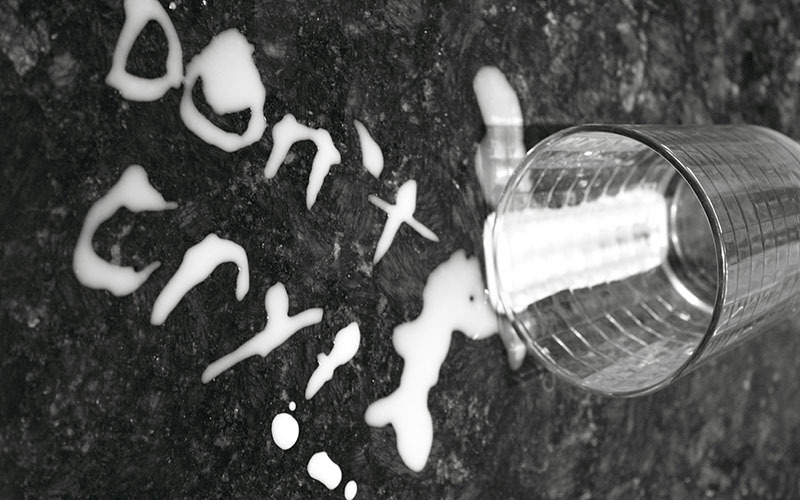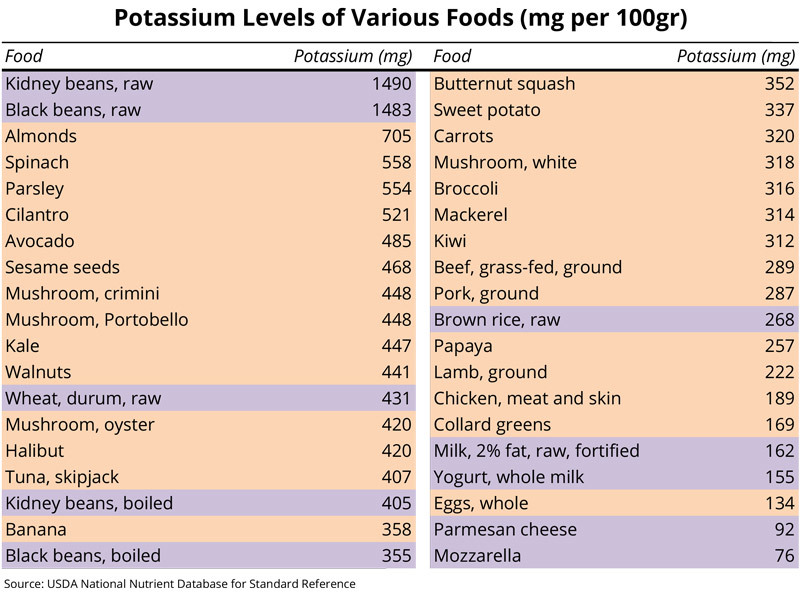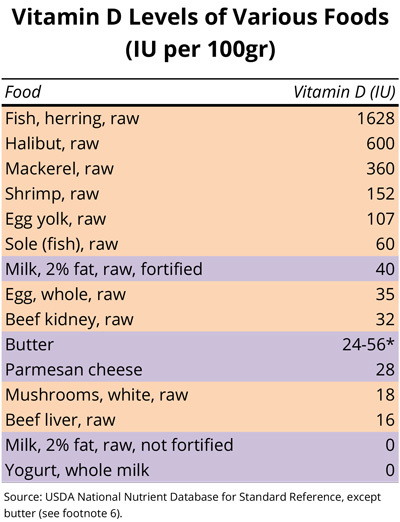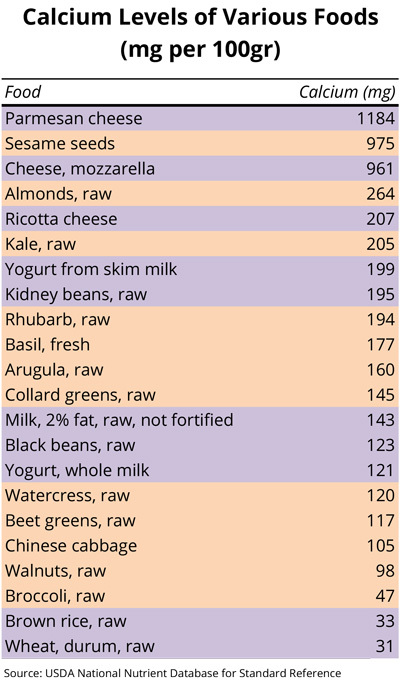Reversing Nutritional Deficiencies by Eliminating Entire Food Groups

Do you believe that “our modern lifestyles, including nutrition, are the cause of current health problems?” If so, you could be susceptible to “fad diets,” according to the United Dairy Industry of Michigan (UDIM). Last week, the organization’s Technical Advisor for Nutrition, Lois McBean, wrote that those who follow The Paleo Diet “are likely setting themselves up for nutritional deficiencies by eliminating entire food groups such as dairy, grains, and legumes.”1
McBean went on to observe, “Such restrictive diets are not consistent with current dietary recommendations including USDA’s MyPlate or the 2010 Dietary Guidelines for Americans.” It’s interesting that she invokes the 2010 Guidelines, considering that earlier this year, the Dietary Guidelines Advisory Committee (DGAC) acknowledged that the 2010 and previous Guidelines contain a glaring error.
In the DGAC’s own words, “Previously, the Dietary Guidelines for Americans recommended that cholesterol intake be limited to no more than 300 mg/day. The 2015 DGAC will not bring forward this recommendation because available evidence shows no appreciable relationship between consumption of dietary cholesterol and serum cholesterol.”2
The 2010 and previous Guidelines were wrong about cholesterol, a mistake that likely persuaded millions of people to avoid eggs, shrimp, and other healthy, cholesterol-rich foods. Is it conceivable that the Guidelines could also be wrong about dairy, cereals, and legumes? We’ll address this question, but first let’s examine the idea of “eliminating entire food groups.”
Eliminating Entire Food Groups
Paleo critics like McBean seem to think the USDA’s MyPlate is inclusive of all food groups, but surprisingly, it excludes the most nutrient dense food group of them all – organ meat. The Paleo Diet, on the other hand, excludes dairy, cereals, and legumes because, despite the nutrients they contain, they also contain antinutrients and promote various adverse health effects. But what possible reason could the USDA and Paleo critics have for excluding organ meat?
In the US, organ meat fell out of favor decades ago, but in most other countries it’s embraced and recognized for its remarkably high nutrient levels. Those who worry about nutrient deficiencies should be questioning the exclusion of organ meat (an entire food group) before criticizing those who, for valid reasons, exclude dairy, cereals, and legumes.
Nutrient Deficiencies
McBean lauds dairy foods as “important sources of multiple essential nutrients, including calcium, vitamin D, and potassium,” while implying that The Paleo Diet falls short on these nutrients. This is an interesting comment for three reasons:
1. Dairy is not a rich source of potassium
The charts below show potassium, vitamin D, and calcium levels for 100g portions of common foods. Paleo foods are highlighted in orange, non-Paleo foods in purple. All values are for uncooked foods; note that 100g doesn’t necessarily represent a serving size. For example, beans are richest in potassium, but once cooked, potassium is significantly diluted because the beans absorb so much water. As shown, Paleo foods, including vegetables, seeds, nuts, mushrooms, fruit, fish, and meat, provide plenty of potassium.
How much potassium is enough? The National Academy of Sciences (NAS) sets the Daily Recommended Intake (DRI) for all nutrients. For potassium, however, instead of a DRI they set an Adequate Intake (AI) level of 4.7g per day. The NAS notes, “dietary intake of potassium by all groups in the United States and Canada is considerably lower than the AI.”3 With so many potassium-rich foods to choose from (note: the chart is not comprehensive), the Paleo diet emerges as the solution for potassium deficiency, not the cause.

2. Most of dairy’s vitamin D comes through fortification

Dairy fat does contain a small amount of natural vitamin D, but non-fat and low-fat dairy have almost none. As shown in the chart, the foods highest in vitamin D are Paleo foods, namely fish, shrimp, eggs, and to a lesser degree organ meat and mushrooms. Even fortified dairy doesn’t provide spectacular amounts.
Furthermore, if you want to go the fortification route, you’re much better off with vitamin D supplements, in which case you could avoid the negative effects of dairy. Note that the DRI for vitamin D is 600 IU/day.
3. Dairy is indeed high in calcium, but the calcium story is nuanced
As Dr. Cordain has explained extensively, net calcium balance (NCB) is far more important than calcium intake. NCB equals calcium intake minus calcium excretion. Calcium excretion is largely a function of acid/alkaline balance. For diets with net acid loads, the body’s calcium salts, which are stored within the bones, are excreted to maintain balance. For diets with net alkaline loads, endogenous calcium stores are unaffected.

The only alkalizing foods are vegetables and fruit. The Paleo Diet is more alkaline than MyPlate because of its emphasis on vegetables and its exclusion of dairy, cereals, and legumes. As shown in the chart, calcium in The Paleo Diet comes from seeds, nuts, bones, vegetables, and from the fact that proportionally less calcium is excreted, due to the diet’s alkalinity. Note that the DRI for calcium is 1,000 mg/day.
Despite its calcium levels, dairy causes more problems than it solves. According to the US National Library of Medicine, an estimated 65% of the global population is lactose intolerant.4 Additionally, drinking 3 cups of milk per day, as McBean and the UDIM recommend, is associated with an increased risk of bone fractures as well as increased overall mortality, according to a cohort study published by the British Medical Journal.5 This study was observational, so it cannot prove causation, but it underscores the net acid load problem and other problems associated with dairy.
Far from promoting nutrient deficiencies, a careful examination of the evidence shows The Paleo Diet reverses nutrient deficiencies caused by junk food and other imbalanced diets. This is accomplished by eliminating problematic food groups, including dairy, cereals, and legumes, while embracing the healthiest food groups, including meat, fish, organ meat, vegetables, nuts/seeds, and fruit.
References
1. McBean, L. (November 4, 2015). Fad Diets: Be Careful What You Wish For. United Dairy Industry of Michigan.
2. Dietary Guidelines Advisory Committee. (February 2015). Scientific Report of the 2105 Dietary Guidelines Advisory Committee. USDA and Department of Health and Human Services.
3. National Academy of Sciences. Institute of Medicine. Food and Nutrition Board. (2004). Dietary Reference Intakes for Water, Potassium, Sodium, Chloride, and Sulfate.
4. Genetics Home Reference. (May 2010). “Lactose Intolerance.” U.S. National Library of Medicine.
5. Michaëlsson, K., et al. (October 2014). Milk intake and risk of mortality and fractures in women and men: cohort studies. The British Medical Journal, 349.
6. Schmid, A and Walther, B. (July 2013). Natural Vitamin D Content in Animal Products. Advances in Nutrition, 4(453-462).
Christopher Clark
Christopher Clark is an entrepreneur, food writer, and business owner with years of experience with nutrition.
More About The Author



